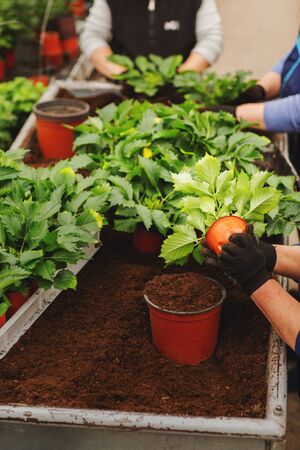Introduction to Greenhouse Farming in India
Greenhouse farming has emerged as a transformative approach within Indian agriculture, offering farmers an innovative way to overcome traditional challenges such as unpredictable weather, pest infestations, and water scarcity. In recent years, progressive Indian farmers across states like Maharashtra, Karnataka, and Punjab have increasingly adopted greenhouse cultivation for high-value crops including vegetables, flowers, and exotic fruits. This method allows for controlled environmental conditions that enhance crop yield, quality, and profitability throughout the year. As the Indian government recognizes the potential of greenhouse farming to boost rural incomes and ensure food security, various schemes and subsidies are being introduced to encourage its adoption. The relevance of greenhouse farming continues to grow as it aligns with sustainable agricultural practices and supports the vision of doubling farmer incomes in India.
Key Government Schemes for Greenhouse Farming
India’s agricultural landscape is rapidly evolving, and greenhouse farming is gaining momentum as a sustainable way to boost productivity and income for farmers. Recognising the potential of protected cultivation, both central and state governments have rolled out targeted schemes and subsidies to encourage greenhouse adoption across the country. Below is an overview of some of the most impactful government initiatives supporting greenhouse farming:
Major Central Government Schemes
Mission for Integrated Development of Horticulture (MIDH)
MIDH is a flagship initiative by the Ministry of Agriculture & Farmers Welfare, designed to promote holistic growth in the horticulture sector. Under MIDH, greenhouse construction receives substantial financial assistance, covering a percentage of project costs for structures like polyhouses, shade nets, and drip irrigation systems.
National Horticulture Mission (NHM)
A sub-mission under MIDH, NHM focuses on the development of horticulture through technology-driven interventions. NHM provides support for greenhouse establishment, including assistance with planting material, training, and post-harvest management.
Popular State-Specific Policies
Different states in India offer their own tailored incentives for greenhouse farming based on local climate and cropping patterns. Here’s a comparative summary:
| Scheme Name | Covers/Assistance | Applicable States |
|---|---|---|
| MIDH (Central) | Up to 50% subsidy on greenhouse cost | All India |
| NHM (Central/State) | Up to 50% subsidy; technical guidance | All India (State Implemented) |
| State Horticulture Missions | Additional 10-15% subsidy over central share | Maharashtra, Karnataka, Tamil Nadu, Punjab, etc. |
| Kisan Suryoday Yojana | Power supply for irrigation | Gujarat |
| Krishi Bhagya Scheme | Subsidy for water conservation & micro-irrigation | Karnataka |
| Punjab Greenhouse Subsidy Scheme | Up to 65% subsidy for small/marginal farmers | Punjab |
| Tamil Nadu Protected Cultivation Scheme | 60% subsidy for greenhouse structures & drip irrigation | Tamil Nadu |
How These Schemes Benefit Farmers
The above schemes provide crucial financial relief that lowers the entry barrier for small and marginal farmers looking to adopt modern greenhouse technology. Besides subsidies on infrastructure setup, many programmes include capacity building, farmer training, market linkages, and input support—making it easier to start and sustain profitable greenhouse ventures in diverse agro-climatic regions across India.

3. Subsidies Available for Greenhouse Construction
In India, greenhouse farming has become increasingly accessible to small and marginal farmers due to a range of government subsidies. These financial aids are designed to encourage the adoption of modern agricultural practices and boost productivity. Below, we provide a detailed breakdown of the available subsidies, their eligibility criteria, and guidance on how farmers can apply through official channels.
Breakdown of Available Subsidies
The main support for greenhouse construction comes from schemes under the National Horticulture Board (NHB) and the Mission for Integrated Development of Horticulture (MIDH). Under these schemes, subsidies typically cover 50% to 75% of the total cost of constructing greenhouses, depending on the state and farmer category. The maximum ceiling per beneficiary is usually up to Rs. 56 lakhs for an area up to 4000 sq.mt., with certain states offering additional top-up subsidies. Different structures like naturally ventilated polyhouses, shade net houses, and hi-tech greenhouses fall under these subsidy brackets.
Eligibility Criteria
To avail these subsidies, applicants must be Indian citizens engaged in horticulture or allied activities. Priority is given to small and marginal farmers, women farmers, scheduled castes and tribes, as well as self-help groups (SHGs) and farmer producer organizations (FPOs). Applicants must own or lease the land where the greenhouse will be constructed and should not have availed similar subsidies for the same land previously.
How to Avail Government Benefits
Farmers need to apply through their respective State Horticulture Departments or via dedicated online portals like the NHB’s website. The process involves submitting a detailed project report, land documents, identity proofs, and quotations from registered vendors. After initial scrutiny and site inspection by departmental officers, eligible applicants receive an approval letter. The subsidy amount is generally disbursed in two instalments: one after completion of construction and another after successful crop cultivation inside the structure. Timely submission of progress reports and compliance with technical standards are crucial for securing full benefits.
By taking advantage of these well-structured government schemes and subsidies, Indian farmers can modernise their cultivation methods, enhance yields, and contribute towards sustainable urban and rural agriculture.
4. Application Process & Documentation
Applying for government schemes and subsidies for greenhouse farming in India can be a straightforward process if you follow the right steps and prepare your documents carefully. Here’s a step-by-step guide to help you navigate the application smoothly and increase your chances of approval.
Step-by-Step Guide to Apply
- Check Eligibility: Visit the official website of the respective scheme (such as MIDH, NHM, or state-specific programs) to confirm your eligibility based on landholding, location, and type of greenhouse project.
- Prepare Project Report: Draft a detailed project report including layout plans, expected costs, technology to be used (e.g., naturally ventilated or climate-controlled greenhouses), and projected returns.
- Get Quotations: Obtain quotations from registered greenhouse manufacturers or suppliers as required by most subsidy programs.
- Application Submission: Fill out the application form—online or at the local agriculture office/ Krishi Vigyan Kendra (KVK)/ District Horticulture Office as per scheme guidelines.
- Document Submission: Attach all necessary documents (see table below).
- Field Verification: After submission, officials may visit your site for verification and feasibility assessment.
- Approval & Subsidy Disbursement: Upon successful verification and approval, subsidy is disbursed directly into your bank account or as reimbursement after project completion.
Required Documents Checklist
| Document | Description |
|---|---|
| Aadhaar Card / Identity Proof | Mandatory for applicant identification and verification |
| Land Ownership Proof / Lease Agreement | Pattadar passbook, 7/12 extract, or lease deed (if land is leased) |
| Domicile Certificate / Caste Certificate (if applicable) | For state-specific schemes or reserved category benefits |
| Bank Account Details | Canceled cheque or passbook copy for direct benefit transfer (DBT) |
| Project Report | Duly signed detailed project plan with budget estimate and quotations |
| No Objection Certificate (NOC) | If applicable, from local authority or gram panchayat |
| Photographs of Land/Project Site | Pics before construction and during implementation for verification |
Tips for Smooth Approvals
- Double-Check Documents: Incomplete applications are a common reason for delays—ensure every required document is attached.
- Stay Updated: Regularly check the status of your application online or with the local agriculture office to address any objections promptly.
- Liaise Locally: Maintain good communication with local agricultural officers; their guidance can simplify procedural hurdles.
- Select Registered Vendors: Always choose empanelled greenhouse suppliers/manufacturers for quotations to meet government norms.
Bharatiya Kisan Tip:
If you are applying under state schemes like RKVY or PMKSY, keep copies of all communications and receipts. Many states also offer facilitation through Farmer Producer Organisations (FPOs)—joining one can make documentation easier!
5. Success Stories and Best Practices
Case Study 1: Mr. Ramesh Patel, Gujarat – Harnessing Government Subsidies for Prosperity
Mr. Ramesh Patel, a progressive farmer from Anand district in Gujarat, transformed his traditional farming into a profitable venture with the help of the National Horticulture Mission (NHM) greenhouse subsidy. By utilizing the 50% capital cost subsidy, he was able to install a polyhouse for growing high-value crops like capsicum and Dutch roses. The consistent production and reduced water usage attracted higher market prices, enabling him to repay loans faster and become a role model in his community. This success highlights how government schemes can empower small farmers and encourage modern agricultural practices without losing touch with local values.
Case Study 2: Smt. Lakshmi Devi, Karnataka – Empowering Women through Technology
Smt. Lakshmi Devi from Mandya district accessed the Rashtriya Krishi Vikas Yojana (RKVY) subsidy to establish a small-scale greenhouse on her family’s ancestral land. With technical support provided under the scheme, she adopted drip irrigation and organic pest management, growing cherry tomatoes that fetch premium prices in Bengaluru’s urban markets. Her journey exemplifies not just financial independence but also a shift in gender roles within rural India, as she now leads local women’s self-help groups on sustainable greenhouse farming practices.
Case Study 3: The Singh Brothers, Punjab – Scaling Up with MIDH Assistance
The Singh brothers from Ludhiana utilized subsidies under the Mission for Integrated Development of Horticulture (MIDH) to scale up their floriculture business. They pooled resources as a joint family enterprise—a common practice in North Indian culture—and constructed multiple greenhouses. This collective approach maximized their access to government funds while fostering community involvement. Their success story demonstrates how leveraging family ties and government support can create sustainable rural livelihoods.
Key Learnings and Cultural Nuances
These stories showcase the practical impact of government schemes on diverse farmer profiles across India. They underline the importance of:
- Community-based approaches that align with Indian joint-family systems
- Empowering women farmers through targeted subsidies
- Adapting modern technology while respecting local agricultural traditions
The experiences of these farmers emphasize that effective use of government subsidies requires awareness, proactive engagement with local agriculture departments, and willingness to innovate while staying rooted in regional culture.
6. Frequently Asked Questions
What are the main government schemes available for greenhouse farming in India?
There are several central and state-level schemes supporting greenhouse farming, such as the National Horticulture Mission (NHM), Rashtriya Krishi Vikas Yojana (RKVY), and state-specific subsidy programmes. These initiatives provide financial support, technical guidance, and training to encourage the adoption of protected cultivation technologies.
Who is eligible to apply for greenhouse subsidies?
Generally, individual farmers, farmer producer organisations (FPOs), self-help groups, and agri-entrepreneurs are eligible. Some schemes may prioritise small and marginal farmers, women, or those from Scheduled Castes/Tribes. It is important to check eligibility criteria with your local horticulture department or Krishi Vigyan Kendra (KVK).
How much subsidy can a farmer get for setting up a greenhouse?
The subsidy amount typically ranges from 40% to 75% of the total project cost, depending on the scheme and location (with higher subsidies in North-Eastern and hilly states). The covered area and type of greenhouse structure also affect subsidy calculation.
What is the application procedure for availing government support?
Farmers must submit an application form along with land ownership documents, project proposal, quotations from approved vendors, and bank account details to the District Horticulture Office or through official online portals. After site inspection and approval, subsidy disbursal usually happens in instalments upon completion of specified milestones.
Are there any training programmes provided under these schemes?
Yes, most government schemes include capacity-building workshops on greenhouse management, drip irrigation setup, pest & disease control, and post-harvest handling. These trainings are often organised by KVKs or Agriculture Universities to ensure farmers make the most of their investment.
How long does it take for subsidy approval and release?
The process may take anywhere between 3 to 12 months depending on document verification, fund allocation cycles, and physical inspections. Regular follow-up with local authorities helps avoid delays.
Can farmers avail loans in addition to government subsidies?
Absolutely. Many banks offer credit facilities for greenhouse projects under priority sector lending. Farmers can combine loans with subsidies to cover remaining costs. NABARD and other rural banks provide special interest rates for protected cultivation ventures.
Where can I find more information or seek help?
You can approach your district horticulture office, visit government portals like NHM or MIDH websites, or connect with agricultural extension officers at Krishi Vigyan Kendras for latest updates and personalised guidance regarding greenhouse farming support in your region.


